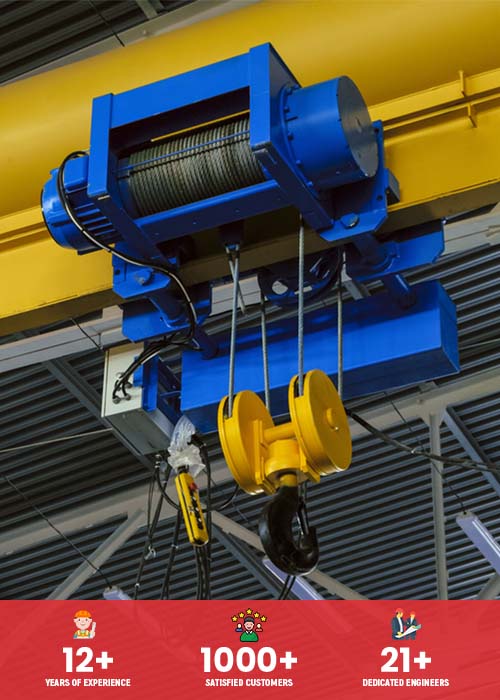The Evolution of Hoist Cranes in India: From Traditional to Technological Advancements
Cranes and hoists, which were once basic devices used to raise and lower objects, have evolved into more sophisticated devices that streamline processes in the construction, mining, infrastructure, manufacturing, and automotive industries. Heavy loads must be raised or lowered in numerous processes in a wide range of sectors, particularly manufacturing, mining, and construction. Machines like hoists and cranes have considerably reduced the need for human labor, shortened processing time, and increased productivity. Given the many utilities, the hoist crane manufacturers in India are getting into the zone of producing better and safer options.
A crane is a device for lifting objects. To hoist and lower goods as well as move them horizontally, it has a winder (also known as a wire rope drum), wire ropes or chains, and sheaves. It has one or more simple machines to generate the mechanical power needed to move the loads because doing so would be physically impossible for a person. For loading and unloading freight, cranes are frequently utilized in the transportation sector.
Did you know that in Ancient Greece, cranes were first employed in building projects?
The majority of their strength came from workers, men, or other animals. Later, as their use grew, they developed into larger cranes that could lift heavier loads. With the expansion of the shipping sector, harbor cranes were developed for material loading and unloading as well as the construction of large ships. Most of the early cranes were made from wood because it was the material that was most frequently used at the time. Cast iron and steel cranes came much after – during the time of industrial revolution.
Today, electric hoists have revolutionized the safe and efficient transfer of heavy loads, drastically altering the lifting and material handling sector. Thanks to technical advancements that allow for higher capacities, improved precision, and improved safety precautions, the use of lifting has been safer, more efficient, and more trustworthy in recent years.
Like all machinery, cranes abide by the law of conservation of energy. As a result, the energy supplied to the load cannot be greater than the energy supplied to the machine. Chain reactions involving cranes are also possible; if one collapses, other cranes nearby may follow suit. Crane design is mostly based on three factors. First and foremost, it should be able to hoist the weight of the load; second, it must be stable; and third, it must not rupture.
Depending on its intended usage, cranes come in a variety of forms. Included in this group are mobile cranes, truck-mounted cranes, sidelift cranes, all-terrain cranes, crawler cranes, aerial cranes, fixed cranes, tower cranes, hammerhead cranes, overhead cranes, deck cranes, jib cranes, bulk-handling cranes, etc.
Technological advancements
The electric chain hoist integrates a number of mechanical and technological developments that are tailored to the changing ergonomic requirements of our environment and deliver benefits to both our workers and overall profitability. The most recent advancements in chain hoist technology successfully address possible risks to productivity and safety, such as shock loading, overloads, twisted chain links, chain wear, and ergonomic difficulties. In recent years, the following intelligent features have been introduced such as:
- Compact Design and Portability
- Remote Control and Wireless Technology
- Improved Chain and Pocket Wheel Designs
- Drive Technology
- Slack Chain Detection
- Anti-Sway Technology
- Load Monitoring Systems
- Digital Interfaces and Human-Machine Interaction



